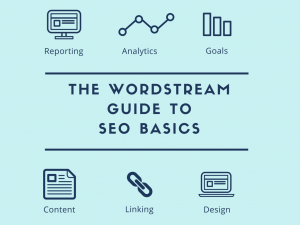Why do some agencies succeed while others struggle to retain clients?
The answer is usually simple: their processes.
Well-documented processes help you acquire, onboard, and deliver results to clients on a consistent, predictable basis. And they enable you to manage uncertainty, provide clients with better experiences, and improve clarity across your team.
Ultimately, documenting your strategies helps you change from goal-based to systems-based thinking, which is the secret for unlocking exponential growth.
In this post, I’ll show you the five most important processes your agency needs to document.
1. Client onboarding and kickoff process
The first experience clients have with your agency will usually define your relationship. If you can make this first touch useful, informative, and pleasant, you will create sustainable, productive alliances.
Well-documented onboarding should focus on five things:
- Setting client expectations. A discord between what clients expect and what you deliver is a major cause of client unhappiness. Use the onboarding stage to set expectations.
- Information-gathering. Document everything you need to start your work, including platform passwords, tracking codes, and social media credentials.
- Client education. Compile a set of educational resources and links to educate clients about your services. The more questions you answer, the better your client will understand your services.
- Establishing communication: Set communication expectations by ensuring that clients know exactly how to reach you.
- Delivering initial success. Document a system for spotting and implementing changes that deliver an immediate win. For instance, an SEO agency might run an audit and fix 404 error pages.
2. Workspace organization
Where do you store all content assets for a client? How do freelancers send you new assets? If a team member wanted to find a particular asset, where should he or she start their search? These are all critical questions you’ll need to answer as your agency grows.
A shared access folder on the cloud might be enough when you have just 2-3 people, but once you grow, you will need some rules to help you locate, tag, and manage all assets.Creating a detailed digital asset management strategy will make your job much easier. Focus on the following:
- Storage rules: Specify the storage location for all client assets and how they are organized. Be as detailed as possible. If GIFs and images go into separate folders, make it clear to everyone on your team.
- Sharing rules: Clarify asset sharing rules for all team members. This should specify exactly where, how, and with whom any particular asset type is shared. For larger teams with lots of outside contractors, you might want to setup access control rules as well.
- Asset management rules: How do you name files for each client? What are your rules for handling duplicate assets? What software tools do you use for different assets? This document should answer all these questions.
This might seem like overkill initially, but documenting workspace organization will make it much easier to stay on top of client projects as you scale.
3. Client acquisition process
Client acquisition at most agencies is hardly consistent and rarely scalable. Far too often, there is seldom any clarity into different acquisition channels (social media, cold email, referrals, etc.) and their success rate.
By documenting your client acquisition process, you will find it much easier to scale your growth.
Here are a few acquisition channels you should document:
- Content: List out exactly how you brainstorm, develop, and promote content. Create this in the form of a checklist and include specific instructions such as. “Add blog post to Twitter” or “Promote guest blog on LinkedIn.”
- Social media: List out your social media schedule, top channels for content curation, and strategies for finding influencers. Also, list out your rules for responding to mentions and retweets and creating your own social content.
- Cold emails: If you’re using cold emails, list out your practices for finding and prioritizing prospects. Also, include your cold email templates and your method for measuring their performance.
- PPC: Specify exactly how you research keywords, develop and test landing pages, and measure PPC performance.
- SEO: Document your keyword research and link building strategies. For the latter, you can break things down into different tactics (such as, “broken link building” and “guest blogging”).
This will provide you and your team with clarity into the client acquisition process.
4. Post-delivery client success process
How do you measure client success after you’ve delivered your work? Do you have any way to gather feedback and ask for referrals?
Documenting a post-delivery client success process can help you get more referrals and repeat clients. It also gives you better insight into your own work.
Here are a few things you should document:
- Surveys and feedback forms: List out the forms and surveys you use to gather feedback. Also, list out where you store the results of the survey.
- Referral process: Develop a method for acquiring referrals from happy clients. This should include steps for identifying satisfied clients (say, those with an NPS score less than 8) and exact emails for asking for referrals.
- Repeat work: If you’ve identified a client as “satisfied,” document your steps for asking for repeat work. You might even want to plug these clients into a nurturing campaign.
- Grievance redressal: If a client is not satisfied with your work, document a strategy to understand and address the client’s complaints.
- Reporting protocols: How exactly do you plan to report your results to clients? Create marketing reporting templates to standardize this task.
5. Consultation/nurturing process
What happens once a client enters his or her name and email into a lead capture form? If you offer a free consultation, what questions do you ask in your first conversation?
Documenting consultation strategies can help you improve your lead-to-close rates. It will also ensure that you—or your sales teams—aren’t caught off-guard by an unexpected question.
Here are a few things you should document:
- Data gathering: List out all the data you need to acquire in your first consultation.
- Client research: Specify what kind of client research you need to do before making the first call. For instance, an SEO agency might want to run an audit on the client’s site before a consultation.
- Questions to ask: List out all the questions you need to ask during the consultation. This will help you send better proposals.
Documenting critical processes will improve your workflow, enhance clarity and transform client communication. Instead of wondering what’s next, you and your team members will have exact steps to ensure client success.
Business & Finance Articles on Business 2 Community
(89)
Report Post





